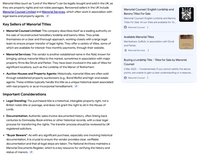The British Titles System
The British Aristocracy -
Titles of Precedence and Dignity of the
United Kingdom of Great Britain and Northern Ireland
An Introduction to British Royal Titles, Titles of the Peerage, Baronetage, Knightage and Feudal Lordships and Baronies
The Sovereign
His Majesty King Charles III & Her Majesty Queen Camilla
The heir apparent to the throne
His Royal Highness Prince William of Wales & Her Royal Highness Princess Catherine of Wales
The Lords Spiritual
The Archbishop of Canterbury is the first peer of England,
The Archbishop of York,
The Bishops of London, Durham and Winchester (and another 21).
The normal form of address is 'Your Grace' / 'My Lord' / 'My Lady'.
Duke / Duchess
created in 1337, highest rank of the peerage. In the United Kingdom addressed as 'Your Grace' or 'My Lord' / 'Your Grace' or 'My Lady' (or 'Madam').
Marquess / Marchioness
created in 1385, in the United Kingdom the title ranks below a duke and above an earl. The normal form of address is 'Your Grace' or 'My Lord' / 'Your Grace' or 'My Lady' (or 'Madam').
Earl / Countess
first earls in England were created in 1017. The Norman kings adopted the Saxon title. The first earls created were dignitaries of enormous power. The normal form of address is 'Lord' / 'Lady' or 'My Lord' / 'My Lady' (or 'Madam').
Viscount / Viscountess
created in 1440, rank in peerage below an Earl, above a Baron. Formerly it was a the title of the Sheriff of a County. In the reign of Henry VI. the title became a degree of honour and was made hereditary. The normal form of address is 'Lord' / 'Lady' or 'My Lord' / 'My Lady' (or 'Madam').
Baron / Baroness
created c. 1066, lowest rank of the peerage. Barons were introduced into England by the Normans, most of whom held that rank in Normandy before the Conquest. Baron meant literally a man, being the King's tenant-in-chief, i.e. holding his land directly from the King per baroniam and giving the owner, wether by inheritance or by acquisition, a bundle of land, minerals and other rights, including certain rights of public justice and privileges. In the 13th century they were summoned to Parliament. The Baronage emerged into an hereditary dignity of the peerage. The difference between a baron of nobility and a feudal baron is nothing except one was converted to a peer by letters patent and one was converted to free socage. They all derived from the same feudal titles. The normal form of address is 'Lord' / 'Lady' or 'My Lord' / 'My Lady' (or 'Madam').
Life Baron / Life Baroness (by writ)
the lowest rank of the peerage. Life peerages had been granted for centuries, usually to women, until the Life Peerage Act of 1958 allowed the regular creation of non-hereditary peerages. A life peerage offers all of the privileges of a hereditary degree to the recipient, including a seat in the House of Lords. The most significant differences being that whose titles cannot be inherited, as contrasted to hereditary Lords. Almost all of the life peerages granted under the Act have been baronies. The normal form of address is 'Lord' / 'Lady' or 'My Lord' / 'My Lady' (or 'Madam').
Baronet / Baronetess
created in 1611, a hereditary title above a Knight and below a Baron. A Baronet (trad. abbreviation Bart, modern abbreviation Bt, after the name) or the rare female equivalent, a Baronetess (abbreviation Btss), is the holder of a hereditary baronetcy awarded by the British Crown. The practice of awarding baronetcies was originally introduced in England in the 1300s and was used by James I of England in 1611 in order to raise funds for the suppression of the rebellion in Ulster. A baronetcy is the only hereditary honour which is not a peerage. A Baronet is styled "Sir" in in front first name, like a knight (or "Dame" for a baronetess), but ranks above all knighthoods and damehoods except for the Order of the Garter and, in Scotland, the Order of the Thistle. However, the baronetage, as a class, are considered members of the gentry and rank above the knightage. A Baronet is not a noble title or knighthood, although they are members of the aristocracy. The normal form of address is 'Sir' / 'My Lady' (or 'Madam').
Knight / Dame
Knighthood is essentially an institution of the days of chivalry. The title of knight was desired and granted as an honourable addition or mark of distinction to the highest dignity, name and rank. The two highest Orders of Chivalry in England and Wales, and in Scotland, are the Order of the Garter (KG/LG), and the Order of the Thistle (KT/LT), respectively. For individually honoured members follows the Order of the Bath (GCB), the Order of St Michael and St George, the Royal Victorian Order, and the Order of the British Empire, in the following order of their ranks: Knight or Dame Grand Cross, Knight or Dame Commander, Commander or Companion, Lieutenant or Officer, and Member. A knight is entitled to use the prefix 'Sir' / 'Dame' with the orders letters after the name. The wife of a knight is entitled to use the prefix 'Lady'.
Lord of the Manor / Lady of the Manor
The Lordship of the Manor is possibly oldest titles in England. In English society, the Lordship of a Manor is a lordship originating in the Anglo-Saxon feudal system of manorialism. In modern England and Wales it is recognised as a form of property. Historically a Lord of the Manor might be a tenant-in-chief if he held a capital manor directly from the Crown; otherwise he was a mesne lord if he did not hold directly from the Crown, yet had his own tenants. Following the Norman Conquest, land at the manorial level was recorded in the Domesday Book of 1086. The normal form of address is 'Lord' / 'Lady' or 'My Lord' / 'My Lady' (or 'Madam').
Lord / Lady
is not only a title, it is also the form to address a Marquess (Marchioness), an Earl (Countess), a Viscount (Vicountess), a Baron (Baroness), a Lord or Lady of the Manor, a youngster son of a Duke or Marquess, a Judge and or a Bishop. The normal form of address is 'My Lord' / 'My Lady' (or 'Madam').
The titles will distinguished in two distinct groups:
I. Titles of the British Peerage
II. Titles of the British Manorial and Feudal System
I.
Titles of the British Peerage
The Peerage of the United Kingdom of Great Britain and Northern Ireland
(British Nobility and Parliamentary Titles)
The modern peerage system is a continuation and renaming of the baronage which existed in feudal times. The requirement of attending Parliament was at once a liability and a privilege for those who held land as a tenant-in-chief of the king per baroniam, that is to say under the feudal contract of being one of the king's barons, responsible for raising knights and troops for the royal feudal army. Certain other classes such as the higher clerics and freemen of the Cinque Ports were deemed barons. This right, entitlement or "title", began to be granted by decree in the form of the writ of summons from 1265 and by letters patent from 1388. Additionally, many holders of smaller fiefdoms per baroniam ceased to be summoned to parliament. As a result of this, the barony started to become personal rather than territorial. Feudal baronies had always been hereditable by an eldest son under primogeniture, but on condition of payment of a fine, termed relief, derived from the Latin verb levo to lift up, meaning a "re-elevation" to a former position of honour. Baronies and other titles of nobility became unconditionally hereditable on the abolition of feudal tenure by the Tenures Abolition Act of 1660, and non-hereditable titles began to be created in 1876 for law lords, and in 1958 for life peers.
Today the Peerage is the collective of all the Lords of the United Kingdom of Great Britain and Northern Ireland or persons raised in class to be considered "Peers of the Monarch". These Lords have a seat in the House of Lords (or referred to ceremonially as the House of Peers) - the Upper house of the Parliament of the United Kingdom. They are assigned by the Crown and cannot be transferred. The candidates are primarily selected by Government. Peers appointed today are either Working Peers and get a seat in the House of Lords or Non-Working and merely receive the Honour.
Titles of the Peerage
- Lords Spiritual
- Duke
- Marquess
- Earl
- Viscount
- Baron
- Life Baron
Until recently, the Peerage could be easily defined as those who held a seat in the House of Lords (part of the Parliamentary system in Britain). Today the most of the hereditary Peers have been removed from the House under recent reforms.
A Privilege of the Peerage - Robes and Coronets
Since the early Middle Ages, robes have been worn as a sign of nobility. At first, these seem to have been bestowed on individuals by the monarch or feudal lord as a sign of special recognition; but in the fifteenth century the use of robes became formalised with peers all wearing robes of the same design, though varied according to the rank of the wearer.
Two distinct forms of robes emerged, and these remain in current use:
1. the Parliamentary Robe is worn for parliamentary occasions (such at the State Opening of Parliament),
2. the Coronation Robe is generally worn only at Coronations. (Formerly, new peers were invested with their coronation robe by the monarch, but this Investiture ceremony has not taken place since 1621.)
Coronets are worn with the Coronation robe. The robes and coronets used at Elizabeth II's coronation in 1953 cost about £1,250 (roughly £29.6,000 in present-day terms). Peers under the rank of an Earl, however, were allowed in 1953 to wear a cheaper "cap of estate" in place of a coronet, as were peeresses of the same rank, for whom a simpler robe was also permitted (a one-piece gown with wrap-around fur cape, designed by Norman Hartnell).
Hereditary titles are those that pass from one generation to the next, usually in direct succession. Dukes, Marquesses, Earls, Viscounts, Barons, and Baronets (Baronets are not part of the Peerage, but as that they are hereditary titles) are usually hereditary in nature. The way they pass from one member of the family, usually from the eldes son, to the next is all dependent upon how the titles were originally granted.
II.
Titles of the British Manorial and Feudal System
The Feudal Lords and Barons of England and Wales of the United Kingdom of Great Britain and Northern Ireland
(Landed Gentry and Squirearchy or lower non-peerage Nobility Titles)
These titles come from the Manorial and Feudal System which Feudal Lordships are not Peers or Peerages of the Realm of the United Kingdom and connected to the British honours system preceded the Peerage and still continue today. Although the feudal lordships were once historical noble titles, they now belong to the feudal system, as a form of feudal dignity. The first Lords in the House of Lords came from the Feudal Lords, Barons and Earls that managed the people and land across the country.
Most of the rights of these title holders have been lost due to their creation or lain dormant so long ago, mostly 1066 at the time of the William the Conqueror (King William I.), but some can date back hundreds of years before. In the 11th century, the Lord of the manor was considered one of the most important people in the country and his duties included collecting taxes. A Manor is a collection of lands grouped into an administrative unit for tax collection. A Lordship is a collection of rights over the manor, including the right to call the owner Lord.
Under the laws of real property in the United Kingdom, manorial or feudal Lordships are known as ‘Estates in land’. They are in English common law as well as in English property law classified as incorporeal hereditaments and are therefore inheritable to the next generation. But one of the principal differences between parliamentary titles and baronies and manorial lordships is, that peerage titles are not in commercio.
Nulle terre sans Seigneur = There is no land without a Lord
William the Conqueror, 1066
Titles of the Manorial and Feudal System
- Earl - a feudal Earldom, like a Manor title vested in property
- Baron - the highest degree of feudal land tenure in 1066
- Lord of the Manor - one of the oldest titles in England
Feudal Hierarchy & Obligations
Earl
In Anglo-Saxon England, feudal earls had authority over their own regions and right of judgment in provincial courts, as delegated by the king. They collected fines and taxes and in return received a "third penny", one-third of the money they collected. In wartime they led the king's armies. Some shires were grouped together into larger units known as earldoms, headed by an ealdorman or earl. Under Edward the Confessor earldoms like Wessex, Mercia, East Anglia and Northumbria - names that represented earlier independent kingdoms - were much larger than any shire. The Earls originally functioned essentially as royal governors. Though the title of Earl was nominally equal to the continental duke, unlike them earls were not de facto rulers in their own right. After the Norman Conquest, William the Conqueror tried to rule England using the traditional system but eventually modified it to his own liking. Shires became the largest secular subdivision in England and earldoms disappeared. The Normans did create new earls like those of Herefordshire, Shropshire, and Cheshire but they were associated with only a single shire at most. Their power and regional jurisdiction was limited to that of the Norman counts. There was no longer any administrative layer larger than the shire, and shires became "counties". Earls no longer aided in tax collection or made decisions in country courts and their numbers were small. King Stephen increased the number of earls to reward those loyal to him in his war with his cousin Empress Mathilda. He gave some earls the right to hold royal castles or control the sheriff and soon other earls assumed these rights themselves. By the end of his reign, some earls held courts of their own and even minted their own coins, against the wishes of the king. It fell to Stephen's successor Henry II to again curtail the power of earls. He took back the control of royal castles and even demolished castles that earls had built for themselves. He did not create new earls or earldoms. No earl was allowed to remain independent of royal control. The English kings had found it dangerous to give additional power to an already powerful aristocracy, so gradually sheriffs assumed the governing role. The details of this transition remain obscure, since earls in more peripheral areas, such as the Scottish Marshes and Welsh Marshes and Cornwall, retained some viceregal powers long after other earls had lost them. The loosening of central authority during the Anarchy also complicates any smooth description of the change over. By the 13th century, earls had a social rank just below the king and princes, but were not necessarily more powerful or wealthier than other noblemen. The only way to become an earl was to inherit the title or marry into one - and the king reserved a right to prevent the transfer of the title. By the 14th century, creating an earl included a special public ceremony where the king personally tied a sword belt around the waist of the new earl, emphasizing the fact that the earl's rights came from him. Earls still held influence and as "companions of the king", were regarded as supporters of the king's power. They showed that power for the first time in 1327 when they deposed Edward II. They would later do the same with other kings they disapproved of. Still, the number of earls remained the same until 1337 when Edward III declared that he intended to create six new earldoms.
Baron
A feudal Baron is a feudal title in the Baronage of England. Barons were introduced into England by the Normans; most of whom held that rank in Normandy before the Conquest. Baron literally meant a man, holding his land directly from the King per baroniam as a tenant-in-chief. William the Conqueror established his favoured followers as barons by enfeoffing them as tenants-in-chief with great fiefdom a largely standard feudal contract of tenure, common to all his barons.
A feudal Barony or Barony by tenure was the highest degree of feudal land tenure, namely per baroniam (Latin for "by barony" or "as a baron") under which the land-holder owed the service of being one of the king's barons. Such barons were selected often on account of their personal abilities and usefulness. Thus for example Turstin FitzRolf, the relatively humble and obscure knight who had stepped in at the last minute to accept the position of Duke William's standard-bearer at the Battle of Hastings, was granted a barony which comprised well over twenty manors. Lands forming a Barony were often located in several different counties, not necessarily adjoining. The name of such a Barony is generally deemed to be the name of the chief manor within it, known as the caput, Latin for "head", generally assumed to have been the seat or chief residence of the first baron. North Cadbury, for instance, the ancient baronial seat of Turstin FitzRolf ('Cadeberie' in his time), became known as the Barony of North Cadbury, Somerset.
The exact date of creation of most feudal Baronies cannot be determined, as their founding charters or any deeds have been lost. Many of them are first recorded in the Domesday Book of 1086.
The duties owed by and the privileges granted to feudal barons cannot now be defined exactly, but they involved the duty of providing soldiers to the royal feudal army on demand by the king, and the privilege of attendance at the king's feudal court, the precursor of parliament.
The exact date of creation of most feudal Baronies cannot be determined, as their founding charters or any deeds have been lost. Many of them are first recorded in the Domesday Book of 1086. The duties owed by and the privileges granted to feudal barons cannot now be defined exactly, but they involved the duty of providing soldiers to the royal feudal army on demand by the king, and the privilege of attendance at the king's feudal court, the precursor of parliament.
In the 13th century the Barons were summoned to the Counselor Parliament, but at first this did not imply that a successor would necessarily also be summoned to subsequent Parliaments. The more important would probably be summoned, but by the reign of Edward III it became usual for successors to receive writs as a matter of course. Thus the Baronage emerged into a hereditary dignity of the Peerage.
The first baron created by patent was John Beauchamp de Holt, created Baron Kidderminster, by Richard III in 1387 but baronies by writ also continued to be created long after this date. The difference in summary, Barons of nobility are converted to peers by letters patent and feudal Barons are converted in 1660 from tenure (Tenures Abolition Act 1660) to free socage and still in continuing legal existence today.
Some English feudal baronies have also come onto the market in this way in recent years e.g. Barony of Pencelli Castle or Barony of Eye.
The Tenures Abolition Act 1660 did not abolish English feudal Baronies. The clue is in the name, it merely removed tenures (paying tax or rent in service (knight service) and not money). Under this Act many Baronies by tenure were converted into Baronies by writ, the rest ceased to exist as feudal Baronies by tenure, becoming Baronies in free socage, that is to say under a "free" (hereditable) contract requiring payment of monetary rents. Thus Baronies could no longer be held by military service.
The Tenures Abolition Act 1660 states this clearly: | ||
Acts of the English Parliament - | And that all tenures hereafter to be created by the Kings Majestie his Heires or Successors upon any gifts or grants of any Mannours Lands Tenements or Hereditaments of any Estate of Inheritance at the common Law shall be in free and common Soccage, and shall be adjudged to be in free and common Soccage onely, and not by Knight service or in Capite, and shall be discharged of all Wardship value and forfeiture of Marriage Livery Primer-Seizin Ouster le main Aide pur faier fitz Chivalier & pur file marrier, Any Law Statute or reservation to the contrary thereof any wise notwithstanding. | All Tenures to be created by the King hereafter to be in free and common Socage. |
There has been at least one legal opinion which asserts the continuing legal existence of the feudal barony in England and Wales, namely that from 1996 of A W & C Barsby, Barristers of Grays's Inn.
Lord of the Manor
Lord of the Manor titles are arguably one the oldest feudal titles in England and still in continuous use. In English society, the Lordship of the Manor is a Lordship originating in the feudal system of manorialism. In modern England and Wales it is recognised as a form of property.
Historically a Lord of the Manor might be a tenant-in-chief if he held a capital manor directly from the Crown; otherwise he was a mesne Lord if he did not hold directly from the Crown, yet had his own tenants. The origins of the Lordship of Manors arose in the Anglo-saxon system of manorialism. Following the Norman conquest, land at the manorial level was recorded in the Domesday Book of 1086. The title cannot be subdivided. This has been prohibited since 1290 in the Statute of Quia Emptores that prevents tenants from alienating their lands to others by subinfeudation, instead requiring all tenants wishing to alienate their land to do so by substitution.
Lord Denning, in Corpus Christi College Oxford v Gloucestershire County Council [1983] QB360, described the manor thus: “In mediæval times the manor was the nucleus of English rural life. It was an administrative unit of an extensive area of land. The whole of it was owned originally by the Lord of the Manor. He lived in the big house called the manor house. Attached to it were many acres of grassland and woodlands called the park. These were the “demesne lands” which were for the personal use of the Lord of the Manor. Dotted all round were the enclosed homes and land occupied by the “tenants of the manor”. |
The Lord of the Manor & his tenants c.1920's | His Lordship's servants & tenants c.1920's | Lords & Ladies c.1900 |
Feudal Lordships, Baronies and Earldoms past and present
Feudal and manorial Lordships, Baronies and Earldoms, hereinafter referred to as Lordship(s), exist today in English custom law as well as in English property law as 'Estates in land'. They are part of the feudal history of England dating back to King William I. 1066 or pre-date the Norman conquest. The feudal titles derive from the King.
Their origins are to this very day closely related to the British monarchy, even though they are not titles of nobiliy as in the peerage. Feudal Lords, Barons and Earls are quiet rightly called Lord, Baron or Earl, but they are not the same as the Lords, Barons and Earls of the peerage, the members of the House of Lords or upper house of the parliament. Immediately after the battle of Hastings in 1066, the Normans and their followers replaced the Anglo-Saxons as leading class. King William or William the Conqueror divided the entire land into Manors and granted it to his Barons. The nobility became a cultural part of England. Only a noble could hold a manor (Marjorie Chibnall: The Normans; Oxford 2000), at later times a commoner could also own a Manor or Barony. Occassionally the Barons were summoned by the King to the Royal Council to advise him. In the 13th century this was the predecessor of the House of Lords. The current manorial/feudal Lords may well be seen as a relic of the ancient Norman noble class. A feudal Lord or Baron is the only title of dignity legally assignable and able to be legally alienated from the bloodline of its previous possessor.
Today feudal Lords are considered as relicts of the Norman nobility, though not in the sense of British peerage titles as already mentioned before, but more as titles of the gentry. The following quotation about Lords of the Manor from the English historian and lawyer Frederic William Maitland characterises nobility in the proper sense.
F. W. Maitland, LL.D., characterised manorial Lords in his book The Constitutional History of England from 1908 thus:
"Dark as is the early history of the manor, we can see that before the Conquest England is covered by what in all substantial points are manors, though the term manor is brought hither by the Normans. Furthermore, in the interests of peace and justice, the state insists that every landless man shall have a lord, who will produce him in court in case he be accused. Slowly the relation of man and lord extends itself, and everywhere it is connected with land. The king’s thanes then are coming to be the king’s military tenants in chief".
The only Lords of any importance at the present day are Lords of the Manors.
William Jowitt, 1st Earl Jowitt: Dictionary of English Law, 1959.
Manorial Rights
Manorial rights are part of English property law and refers to the law of acquisition, sharing and protection of valuable assets in England and Wales. As such they can be bought and sold as other properties. Therefore manorial Lordships can be rightful transferred, conveyed, inherited or sold to other parties. This practice has been common since the medieval times. Manorial or feudal Lordships are the only titles that can be purchased. Feudal titles like Lord of the Manor, feudal Baron or Earl are nonetheless historic artifacts and protected in the 1922 Law of Property Act.
Historically the feudal Lord has carried with it a bundle of rights over land within the manor, even over land that was in the hands of tenants and common land. Lordship rights varied from Lord to Lord, some of these were included in the grant of the Lordship such as the right of corporal and capital punishment or the 'Right of Gallows' and 'Right of Stocks'. Another important grant of right would be to hold a market within the manor.
Other privileges have included the right to hunt wild animals on the wastes of the manor - common land - and the right to wild fish. The Lord could demand payment from people fishing in rivers and lakes within his manor - common land.
A Manor/Lordship always came in three parts:
1. Land,
2. Rights over the Land,
3. Lordship - power to collect fealty {services} and taxes.
To convey all three rights they had to be specifically listed in the deeds of transfer.
Lordship titles have existed for hundreds of years with legal rights originally granted by the Crown.
The Lord of the Manor or feudal Baron title is a property – in legal terms it is known as an ‘incorporeal hereditament’
Under the laws of real property in the United Kingdom, manorial or feudal Lordships are known as ‘Estates in land’. A feudal Lordship title itself can be separated from the physical property just as any other right can. Titles became separate from the physical land in 1922. Officially a manorial or feudal Lordship title is is classified in law as an 'incorporeal hereditament', a 'property without body'.
'Incorporeal' means having no physical presence (not to see, touch or smell). 'Hereditament' means inheritable, a Lordship title can be inherited to the next generation (meaning the right continues forever more).
Through English Custom Law each owner of a Lordship of the Manor, feudal Barony or Earldom gained the legal right to use the titles of 'Lord and Lady', 'Baron and Baroness' or 'Earl and Countess'. The lawful holder of a feudal Lordship has the legal right to style him or herself, The Lord or Lady of X, (The) Lord or Lady of the Manor of X, (The) Baron or Baroness of X or (The) Earl or Countess of X, all feudal titles dating back to medieval times and still exist today. The remaining manorial or feudal lordship rights are property rights under the law of England and Wales and protected by the Crown in the Law of Property Act 1922.
Titles from the English Manorial and Feudal System can be owned by anyone, irrespective of nationality. With the aquisition and conveyance of a Lordship, the new owner inherits the rank and the status of a feudal Lord, even some become involved in the local community. Whilst at the same time he becomes the successor in title in line with often eminent historical figures which have essentially infuenced the history of Britain. Therewith the holder of a Lordship is a custodian of the title and its history in trust for future generations.
Sometimes there are several names (or titles) for one and the same Lordship. Most Lordships were granted between 1066 and 1086 and were named then. Each Lord could change the name of the Lordship (or title) in the same way as we can change the name of a house today. These can still be used today by the owner of the lordship, depending on which name is preferred.
Usage of a Lordship of the Manor, Feudal Barony or Earldom Title
A Lordship, Barony or Earldom is attached or refers to a certain place, which is why most Lords are proud to show their title as being Lord of X or Baron of X. The owner of a feudal Lordship or Barony did gain the legal right to use the titles by English custom law and is entitled to be called a Lord/Lady or to refer to themselves as Lord/Lady of that Manor or Baron/Baroness of that Barony, for example, Lord/Lady of Blakewell or Lord/Lady of the Manor of Blakewell, Lord/Lady of Codiford Farleigh, or Baron/Baroness or Lord/Lady of North Cadbury.
The right to use the title Lord or Lady of X, Lord or Lady of the Manor of X, Baron or Baroness of X, or Earl or Countess of X, etc. is a legal custom right - to seek recognition that one is the owner of a specific manorial right - as it meets certain basic requirements in this respect.
The title can be seen as a synonym for ownership with a historical background. It has also been accepted through the centuries that the “of” can be dropped. The owner of a Lordship has the choice to use his title whichever he prefer (listed below according to availability of the respective feudal titles). How to refer to a holder of a Lordship and his title is not so much a matter of English Law, as a matter of taste and etiquette. Good manners and respect for history and the Lordship title would suggest that using the title in the correct way generates respect for the Lord or Lady and his or her Manor.
How to address a feudal Lord as a person of rank correctly
Lordship of the Manor of X | How to refer to the Lordship title (The) Lordship of the Manor of X | The holder of a manorial lordship can be addressed or style themthelve as follows: The Lord and Lady of the Manor of X | Letter Envelope: Personal Name, Lord/Lady of X or Lord/Lady of the Manor of X or Lord/Lady Lastname of X top: Dear Personal Name Lord/Lady of X or Dear Lord/Lady of X or Dear Lord/Lady X or Lord/Lady Lastname of X |
Barony of X | How to refer to the Barony title (The) Barony of X | The holder of a barony can be addressed or style themselve as follows: The Baron and Baroness of X | Letter Envelope: Personal Name Baron/Baroness of X or top: Dear Personal Name Baron/Baroness of X or |
Earldom of X | How to refer to the Earldom title (The) Earldom of X | The holder of an earldom can be addressed or style themselve as follows, but he should not drop the 'of' from the title, because it originates from a placename and not from a surname like some Earls of the peerage: The Earl and Countess of X | Letter Envelope: Personal Name, Earl/Countess of X or top: Dear Personal Name, Earl/Countess of X or |
NB: If you have a genuine Manorial Title, the Lord or Lady can be used before the name. However, you should be sensible when using Lord/Lady before your name, you must never pretend to be a peer and in the UK, this is a criminal offence. English manorial lordships, feudal baronies or earldoms are ancient titles which relate to land tenure and should not be confused with titles of the peerage.
These address code rules hold good for English manorial lordships, feudal baronies and earldoms. Because so many variations in feudal titles are accepted, it is helpful when the style preferred by the holder of an Earldom, Barony or Lordship is printed at the head of stationery, on correspondence or business cards.
In Britain it's further possible to add Lordship titles to passports and driving licence. Newest changes made by the Crown and Government in the recognition of manorial titles to add and record titles on a passport:
In this regard, please read the latest 'Guidance Titles Version 14 (updated 25 October 2022/26 May 2023)' of the Guidance for HM Passport Office operational staff on how to add and record titles and observations on a passport ('Manorial titles' and following passage 'Bought and styled titles') to reflect the change in our sovereign from Her Majesty Queen Elizabeth II to His Majesty King Charles III.
Registration of Manorial or Feudal Titles and official announcements in 'The Gazette' - Royal Warrant Holder and official journal of record of His Majesty's Government and the Crown
The only officially recognised instance of manorial title registration was HM Land Registry. This used a registry for lordships, but they did not require the applicant to prove ownership. In 2003 HM Land Registry ceased as ONLY Government Agency registration of manorial titles due to lack of demand.
In fact, since then there has been absolutely not one, independent and trustworthy officially government recognised English Lordship and Barony Register or Roll e.g. to record any manorial or feudal Lordship title in legal ownership entirely correct and truthfully! Any register that can be found online and run by societies or companies whatever they call themselves, have no legal validity, neither officially or otherwise and are not recognised by any government authority in the UK! These purely private registers generally list titles that lack any legal basis (e.g. lack of confirmations by UK registered solicitors (SRA)/lawyers and no legally correct executed conveyance deeds) and therefore are not genuine feudal titles in legal terms. These pure listings are absolute irrelevant and not the appropriate place for registration of a real English Lordship title and should be avoided! In order to be on the safe side, seek advice at a long-term experienced expert and UK authority in the field of manorial titles.
But there is one absolutely reliable exception, recognised by His Majesty's Government and the Crown, namely the 'The Gazette' (formally The London Gazette) in which legally transferred Lordships and Baronies are published and registered in form of a legal notice. The Gazette is the official journal of record of His Majesty's Government and the most important among such official journals in the United Kingdom, in which certain statutory notices are required to be published. As the publication is limited to the legal community all its entries are judged to be true.
The Gazette, formally 'The London Gazette', is a publication where legal notices are placed and where HM The King announces his Honours.
As such, it is also an official public record announcing to the world the legal ownership of Lordship and Barony Titles.
The legal conveyance and ownership of a feudal or manorial title can be officially announced and recorded in The Gazette. It operates under strict Government and Crown approval and consists largely of statutory notices and also where the Crown Office publishes the King’s Honours List. The Gazette is published by TSO (The Stationery Office) on behalf of His Majesty's Stationery Office. They are subject to Crown copyright.
The entire content of the publication is dedicated to necessary publishing of legal notices, events and announcements. That implies that there are some legal requirements for the notice placer to advertise a notice in The Gazette.
An official publication of the Royal Family such as The Gazette, renowned for its impeccable reputation, must never publish the confirmation of feudal lordship titles if there was even the slightest suspicion of illegality.
Notices can only be placed in The Gazette by verified persons acting in an official capacity, who have the authority to create an official record of fact e.g. UK registered Solicitors/Lawyers (SRA).
A legal notice in The Gazette officially announces whether the title was granted or established by the Crown or legally created and tranferred by legal process and in this case who is the acting solicitor; see 'All notices' and 'Other Notices' of manorial Lordships, feudal Baronies, Earldoms.
The announcements of titles recorded in 'The Gazette' can be seen as a kind of 'Who's Who' of actually existing lordships.
Manorial and Lordship Title Law
Legal Information, Requirements and Importance of Solicitors in the Assignation of a real historic Lordship Title
The conveyance, transfer or acquisition of a genuine manorial or feudal Lordship title is a serious transaction and requires correctly executed legal documentation. Only a full set of consecutive deeds dating back to before 1189 or a later crown grant is the only way to confirm ownership of a lordship and that's very rare!!!
Without the complete set of Lordship deeds, as proof of ownership, it is impossible to prove ownership but also who is the real owner. The Court Case Beaumont v Jeffery 1925; confirmed there was no requirement for the Lord of the Manor to retain manorial records. This was overturned by amending legislation added to the Law of Property Act 1922. This does mean though that many manorial records were lost or had been destroyed.
It is generally accepted that almost no such complete sets of deeds exist, so effectively there are no owners.
Although all "ownerless" property escheated (passes) to the Crown, the Crown still has to prove that there is no owner. And the Crown only owns lordships that it can prove have no other ownership. This takes extensive knowledge and time to do this work for the value of the more minor lordships. Therefore, the Crown Estate is not interested in doing the necessary legal work to claim something worth so little and has decided that it is not interested in lordships in gross. It only wants the most valuable lordships, so makes no or very few claims for lordships which are dormant, not in use and where the owners are not known.
After the latest court cases in 2010/2012, it was ruled that alleged Lordship titles based e.g. on Adverse Possession, Statutory Declarations, Court Rolls, a few deeds or even just a single deed are not valid remedies of proof and do not enable the ownership of a Lordship title. The same applies to Registration as (international) Trademark ® or Copyright © titles or a 'Square foot of Land' (also called 'Souvenir plots').
Real historic Feudal Lordship titles which are provably dormant and not in use can be fully legal created (also defined as re-created, restored or re-constructed; see: Dr Paul Stafford, Barrister at Lincoln's Inn: “Re-constructing manorial title”, 2022), acquired and transferred by legal process. Therefore, UK registered Solicitors/Lawyers (SRA - Solicitors Regulation Authority) should always be involved in the transfer as described below, as this is the only way to ensure that the assignment is legal and the Lordship title is valid!
What is a UK registered Solicitor? A solicitor is a legal practitioner (lawyer) who traditionally handles most legal matters. To be called a solicitor and practise as such, a person must have legally defined qualifications. Practising solicitors must possess a practising certificate.
It is a criminal offence for someone in the UK to claim to be a practising solicitor who is not. All practising solicitors must be registered with the Solicitors Regulation Authority (SRA) and are given an SRA registration number. The Solicitors Regulation Authority (SRA) is the independent regulatory arm of The Law Society. It makes and enforces the rules which solicitors regulated by the SRA must follow. On the SRA website can be checked if a solicitor is legitimate and has a SRA registration number. All solicitors have to adhere to a strict code of conduct and each year many solicitors are struck off by the SRA and lose their licence for not meeting these standards.
UK registered Solicitor(s) (SRA) should verifying the process and the compliance of the legal requirements of legal rights to the creation of each title under strict adherence, either by evidence of an unbroken chain of deeds dating back to 1189 or Time Immemorial - which are extremely rare (the most Lordships have not!!!) or in some cases back to a later crown grant (this is over 800 years of deeds) or by the legal process of the applicable law identified by a senior London Barrister and under consultation with the Crown Office.
Most Titles sold online are NOT genuine, and therefore illegitimate!** Important Minimum Legal Requirements and Standards to Legal Acquisition, Transfer & Registation of Manorial Titles |
It is very important with a genuine Lordship title that the Deed of Conveyance evidencing the title have been certified by at least one UK regulated Solicitor/Lawyer (SRA) to ensure the legal validity and authenticity of the documents and feudal Lordship title! Below are the most important legal documents issued by UK registered Solicitors (SRA) that should be included in the Deed of Conveyance, together with any other relevant documents, which form the most important contents of the 'Estate Documents'*: 1. Solicitor's 'Statement of Truth' - confirming the Deed of Creation, relying on 'Counsel's Opinions' 2. 'Solicitor's Letter' - confirmation and proof of the legal right and authenticity to the Lordship/Barony Title 3. 'Legal Public Notice' in 'The Gazette' (formally 'The London Gazette') - The Official Public Record of the Government and the Crown *Please note: Only title vendors who can prove that they meet these minimum legal requirements and standards, with proven cooperation and under the legal supervision of (several) SRA-regulated Solicitor(s), and additionally the legal capacity to publish the legal ownership of manorial/feudal titles in 'The Gazette', are recognised as specialists in manorial law and UK's leading authorities in the trade of legitimate manorial/feudal Lordship and Barony titles. Legal Fees: The lawful transfer of a lordship title incurs legal fees (for legal services such as those mentioned above), which are payable separately by the assignee or already included in the transfer price. **Important Advice: If you are interested in acquiring and transferring a GENUINE manorial Lordship title (with legal public notice and recording in 'The Gazette'), seeking well-founded and reliable expert advice from a long-experienced and renowned specialist in manorial law and leading UK authority or expert in this field. |
Conclusion
A Peerage or Nobility title is a personal dignity which will pass, if it is not a life peerage, to the next legitimate descendant and can not be acquired. Hereditary peerage dignities can only be created through HM The King by writs of summons or by Letters Patent. Equally a life peerage can only be created or granted by the King on advice of His Majesty's Government by Letters Patent. These members of nobility are custodians of parts of English history, huge landholdings and estates and stately homes. Some are responsible in the sense of leading politicians, as they are hereditary members of the nobility which have a seat in the House of Lords, the upper house of the Parliament of the United Kingdom.
In the UK it is a criminal offence to use a Peerage title (e.g. extinct Duke, Marquess, Viscount or Earl titles that were NEVER feudal titles but are offered fraudulently as such!) without a Letters Patent issued by the Crown. When Peerage titles become extinct or abeyant, they have been escheated (reverted) to the Crown. The King may claim these at any time and grant them to members of the Royal Family or other high-ranking subjects. The sale, purchase and usage of such a title is a criminal offence that is punishable by law and incurs substantial fines. Even bearing such a invalid form of a 'novelty' title of peerage can lead to criminal prosecution for falsely claiming to be a British peer. There are actually cases where this has happened. Manorial Lordship and Feudal Barony or Earldom Titles are property so these have no such restriction, see also Honours (Prevention of Abuses) Act 1925.
A Manorial or Feudal Lordship title is a territorial dignity and is classed to the lesser non-peerage noble rank, which passes as an 'incorporeal hereditament' to the next legitimate descendant, or can also be transferred, conveyed or acquired. Furthermore a Lordship Title Right is a right in law. A ‘right’ which cannot be seen or touched so can only exist when created by a legal process, whether that is a grant by the Crown or application of statute law and common law. An English Lordship title can be owned by anyone, irrespective of nationality. The holder of a manorial or feudal title is a responsible custodian of a part of English history and heritage, which can go back more than 1000 years. Therefore the feudal Lord holds his title in trust for future generations.
Noblesse oblige
In today’s world, acquiring and assignment of a Lordship title is an exciting way to connect with this rich historic heritage. If you seek the prestige of a lordship and enjoy the fascinating traditions tied to nobility, embracing and continuing of old traditions and customs can add a touch of historical charm to modern life. Provided the historical title of lordship was assigned absolutely according to legal requirements as described above, then the status of a truly honourable and noble lord is lawful.
As the holder of a feudal Lordship, Barony or Earldom, and therefore of the rank of a noble Lord, Baron or Earl, it is a great privilege to be part of English history. As such, the owner should use his title with the appropriate responsibility, pleasure and pride that such a centuries-old Lordship title brings. In addition the holder of a title should also act like an honourable Lord. The behaviour of a Lord towards other people should always be in accordance with his status. A Lord should follow a few virtues and act like a Gentleman - responsible, tolerant and noble, according to the french motto "noblesse oblige" or in English "nobility obligates".
Caveat Emptor!
The acquisition or legal transfer of a feudal Lordship or Barony title is a serious matter, but one that requires extreme caution. Because English manorial law is very complex, there are many pitfalls where you can lose money. Prior to title transfer, it should always be made clear that the authenticity of a feudal Lordship title, as well as its legitimacy, is confirmed by the aforementioned legal documents (most notably Solicitor’s letter with proof of conveyance) issued by verifiable SRA-registered solicitors and are included in the assignment deeds. Without these legal documents or confirmations you will NOT have a genuine historic Lordship title and you will lose your money. For long-experienced and leading UK authorities and purveyors of hereditary Lordship and Barony titles, such documents are a matter of course. Unfortunately, the trade and transfer of feudal Lordship titles is not protected or regulated by UK government authorities and some fraudsters and forgers take advantage of this to operate on the internet. Beware of title fraudsters on the internet!
Since HM Land Registry ceased to register manorial titles in 2003, there are no officially recognised manorial title registers that legally register manorial or feudal titles correct and reliable. Only ‘The Gazette’ (the official publication of the Royal Family and where the King announces his Honours) in which a real lordship title is recorded and published, has assumed the function of an official and legal register.
If you are interested in acquiring and transferring a genuine manorial Lordship title (with legal public notice and recording in 'The Gazette'), seeking well-founded and reliable expert advice from a long-experienced specialist in manorial law and leading UK authority in this field.
This purveyor of hereditary Lordship and Barony titles, for example, has instructed a senior London Barrister to ascertain a legal right of use, also in consultation with the Crown Office. The Barrister's legal research and advice, also known in law as the Counsel's Opinions, has been shared with several independend SRA-registered Solicitors. Two of these Solicitors write Statutory Declarations confirming they have read the Barrister's work (Counsel's Opinions) and seen evidence that the necessary work advised by the Barrister has been undertaken for each Lordship or Barony title. Additionally, the wording of this company's legal public notices in The Gazette have been agreed with the Crown Office, again confirming they are not interested in lordships in gross.
The following links will bring you to a very good and interesting short article on the legal acquisition of genuine English Lordship titles and to the most trustworthy suppliers of manorial titles. Click on images below to read.
References:
- A.W. & C. Barsby: Manorial Law. A.W. & C. Barsby Legal Research and Publishing, 1996. ISBN 9780952162520
- Christopher Jessel: The Law of the Manor. Barry Rose Law Publishers Ltd., 1998. ISBN 1872328385
- Paul Stafford (Barrister at Lincoln's Inn): 'Manorial title: Reconstructing title'. Property Law Journal, Okt. 2022.
- Government Publications: Guidance for HM Passport Office operational staff on how to add and record titles and observations on a passport. 26 May 2023.
- Sidney Painter: Studies in the History of the English Feudal Barony. Johns Hopkins Press, 1943.
- Nathaniel J. Hone: The Manor and Manorial Records. Methuen Publishing Ltd., London, 1906.
- F.M. Stenton: The First Century of English Feudalism 1066-1166. Clarendon Press, 1932.
- F.W. Maitland: The Constitutional History of England. Cambridge University Press, 1908.
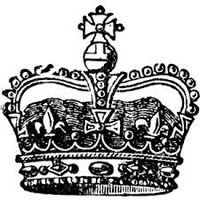

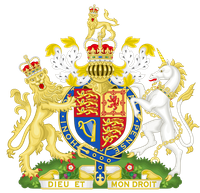
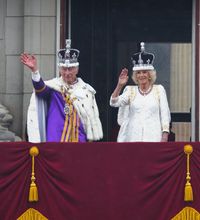
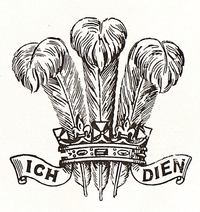
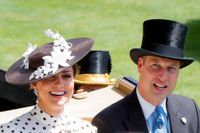
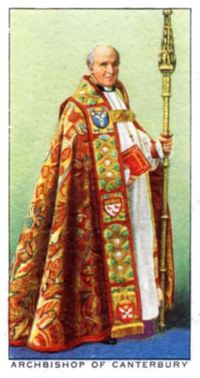
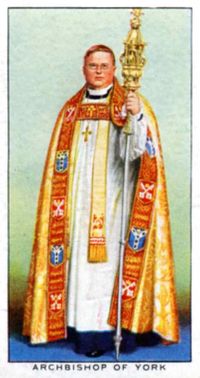
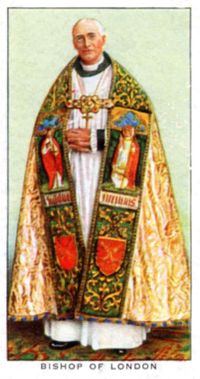
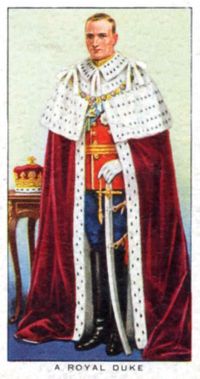
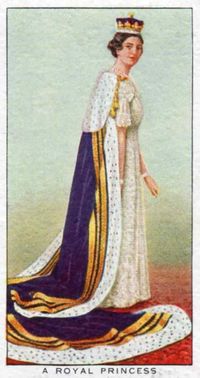
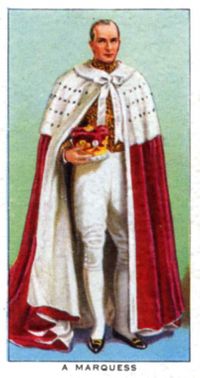
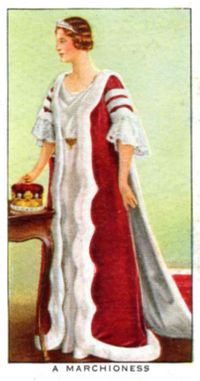
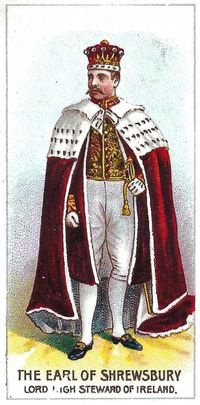
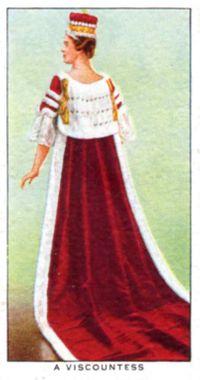
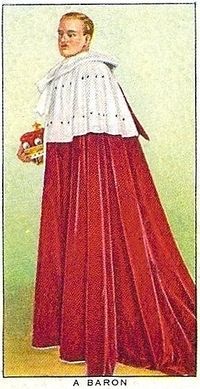
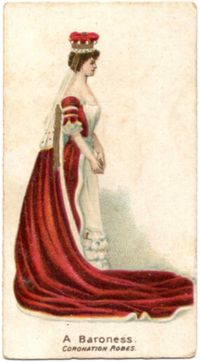
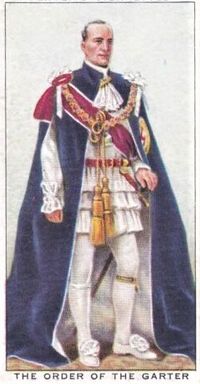
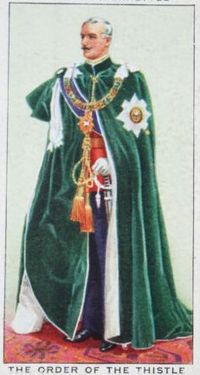
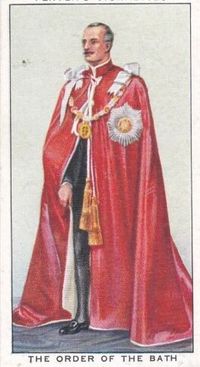
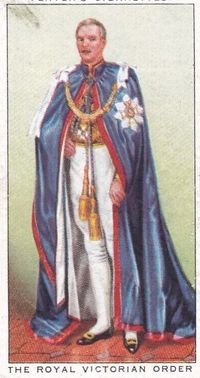
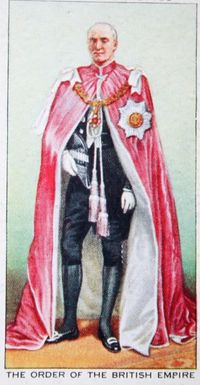
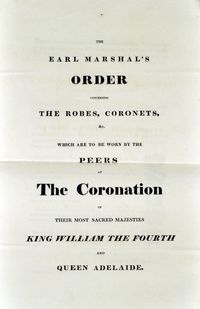

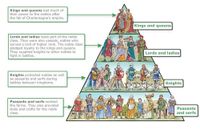
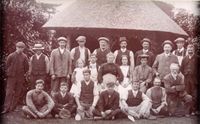
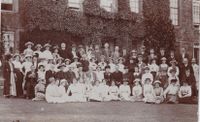
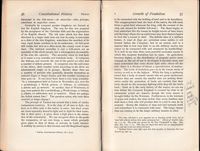


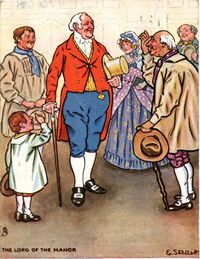

_1.png/picture-200?_=19503692bb8)


